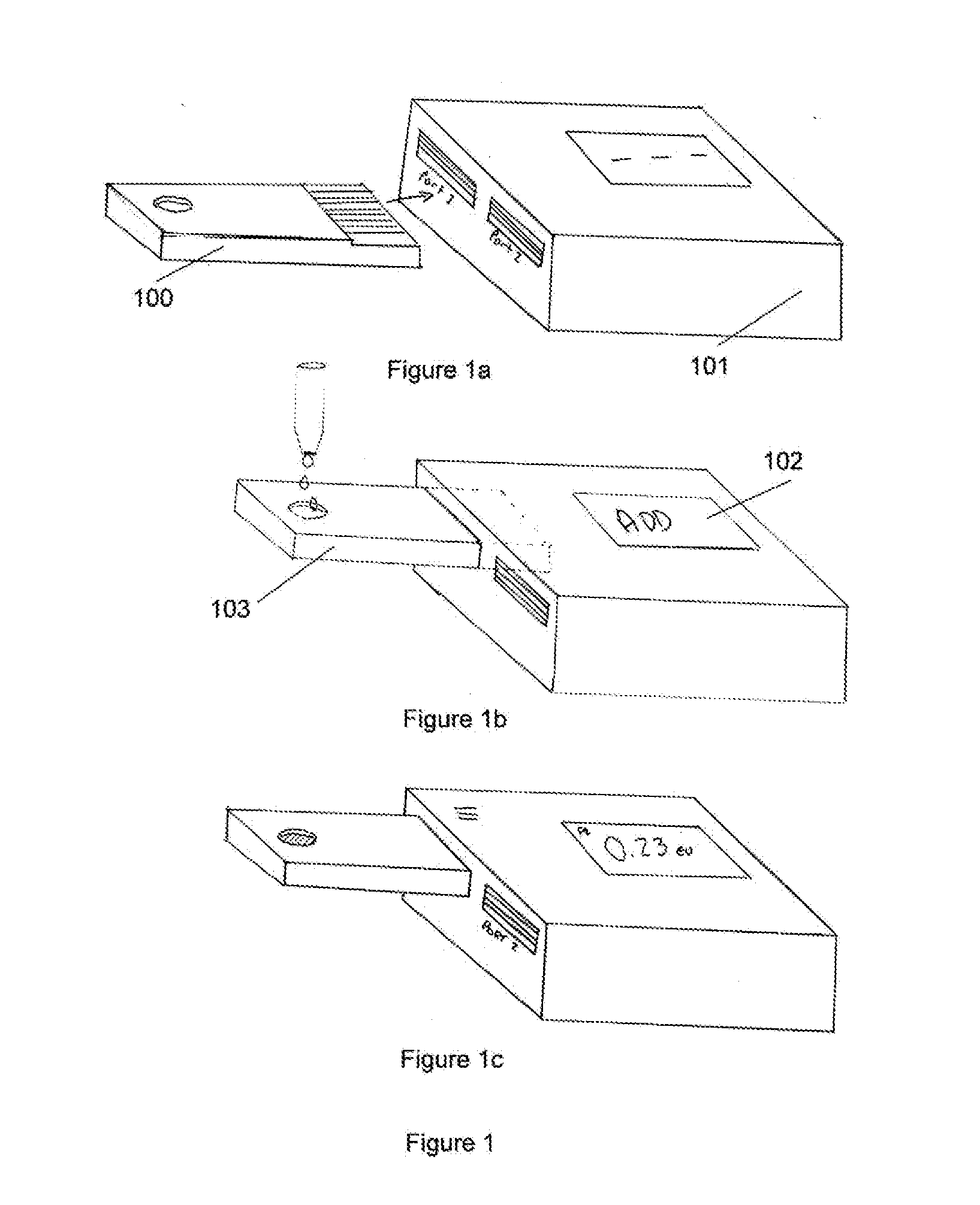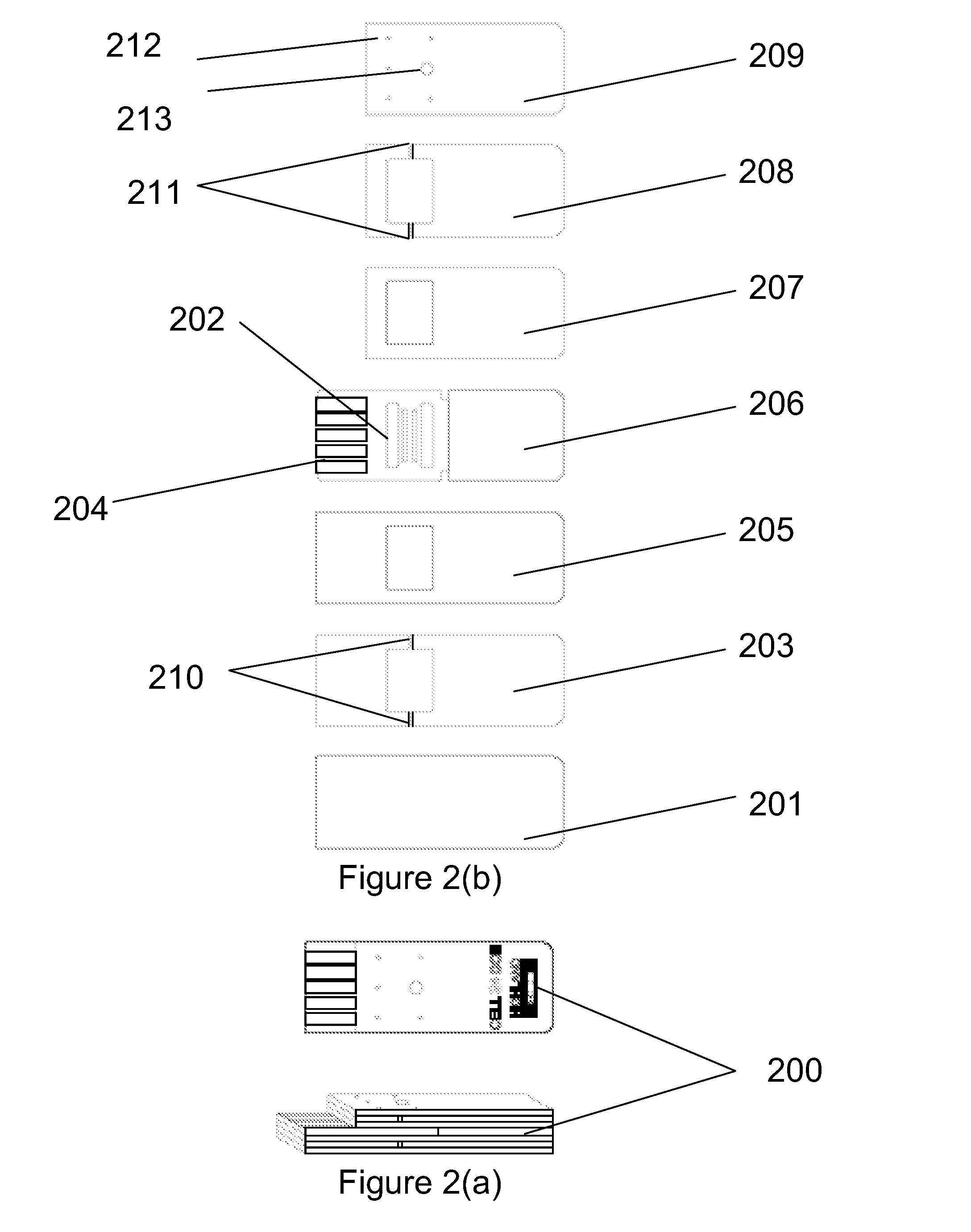Apparatus and method for determining the results of assays
a sensor and assay technology, applied in chemical methods analysis, material thermal analysis, material testing goods, etc., can solve the problems of increasing the degree of error, slow and expensive test, and large quantity of lal reagents used for each sample, so as to reduce the effect of physical adsorption, and promote hydrophilic behaviour
- Summary
- Abstract
- Description
- Claims
- Application Information
AI Technical Summary
Benefits of technology
Problems solved by technology
Method used
Image
Examples
example 1
A Method Used for a Sensor Manufacture
Sensor Manufacture
[0227]The multi-beam resonating sensor, which in this embodiment is a triple beam resonator comprised of 3 resonating beam members arranged in a parallel configuration, is comprised of the following materials: (i) Steel of 200 μm thickness supplied from Precision Micro Ltd (Birmingham, UK), (ii) Insulation 4924 (ESL, King of Prussia), (iii) Gold Cermet Ink 8836 (ESL, King of Prussia), (iv) PZT paste (Highland BioSciences Limited, Inverness, UK), (v) Silver Palladium Ink 9912-K (ESL, King of Prussia), (vi) Insulating Dielectric 240-SB (ESL, King of Prussia), (vii) Polystyrene Film, AR9020 (Adhesives Research, Ireland), (viii) Acrylic Adhesive Tape (Adhesives Research, Ireland), (ix) Hydrophilic Film 9971 (3M, Minneapolis, USA), and (x) Medical Grade Polyester (Autotype, Oxon, UK)
[0228]The multi-beam resonating sensor fabrication procedure was as detailed as follows: Triple beam resonating sensors were patterned into the sheet st...
example 2
Optimisation of Triple Beam Resonator Structure and Dimensions
[0231]This example was performed in order to determine the optimal configuration of the triple beam resonator in relation to its sensitivity in use for detecting viscosity and density in a liquid rest sample. This analysis also allowed the identification of the most influential aspects of triple beam resonator design, which enable the real time monitoring of assays and chemical reactions where precipitation, agglutination, gellation or coagulation is a measurable parameter which indicates the occurrence or progression of a chemical reaction.
(i) Triple Beam Resonator Design
[0232]FIG. 6 shows the parameters of the triple beam resonator which were varied in the performance of this experiment. In this figure, (a) relates to the width of the middle (central) beam of the resonating beam members, (b) relates to the beam length, (c) relates to the spacing distance between beams, (d) is the beam mounting zone, and (e) is a gap bet...
example 3
Biosensor for Studying the Performance of Protein Removing Agents
[0255]The efficient removal of protein is an issue in many applications including medical devices and diagnostics, and selecting the optimal agent for removing protein can be difficult without a means of monitoring the progress of the removal. This is an example where the method of following a biochemical reaction using a triple beam resonator device according to the present invention can be of use.
[0256]A model protein (Limulus Amebocyte Lysate) or LAL was used in this example. A triple beam resonator was (design 9 (Cell 9 DOE) from FIG. 7 was selected, however other designs could have been selected) and fitted to a reaction chamber as described in Example 1. The response in air was measured, and several characteristics of the peak were measured as well as the frequency and the Q-factor.
[0257]The triple beam resonator was then incubated in a solution of protein LAL in the absence of endotoxin for two hours and allowed...
PUM
| Property | Measurement | Unit |
|---|---|---|
| distance | aaaaa | aaaaa |
| distance | aaaaa | aaaaa |
| distance | aaaaa | aaaaa |
Abstract
Description
Claims
Application Information
 Login to View More
Login to View More - R&D
- Intellectual Property
- Life Sciences
- Materials
- Tech Scout
- Unparalleled Data Quality
- Higher Quality Content
- 60% Fewer Hallucinations
Browse by: Latest US Patents, China's latest patents, Technical Efficacy Thesaurus, Application Domain, Technology Topic, Popular Technical Reports.
© 2025 PatSnap. All rights reserved.Legal|Privacy policy|Modern Slavery Act Transparency Statement|Sitemap|About US| Contact US: help@patsnap.com



